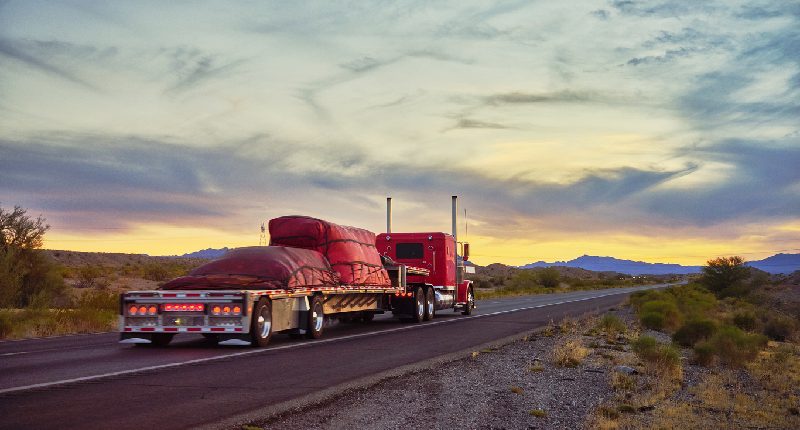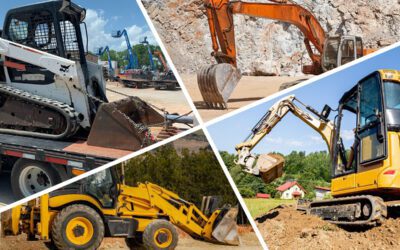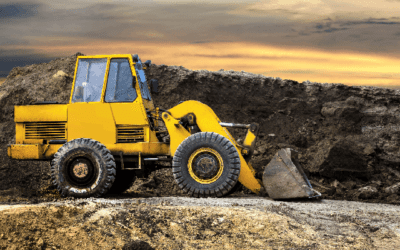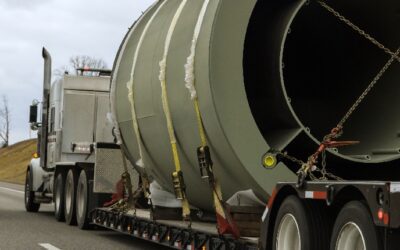Step Deck vs Flatbed: Which Should You Use?
Experienced shippers understand that there are times when a standard trailer will not meet their needs. Some cargo doesn’t fit into the enclosure of a dry van trailer, while others can’t be loaded or unloaded from a dock. That’s where flatbeds and step deck trailers come in to take on the oversized and over-dimensional loads.
So, when it’s time to decide which heavy-duty deck trailer to use, remember that the most crucial factor is the cargo you intend to haul. Decks are ideal for transporting larger loads such as excavators, tractors, building materials, and other heavy hauls. Unlike vans and reefer trailers that must be loaded from the back, decks are loaded from the back, sides, and front, adding to their versatility.
The two most popular decks are step decks (a.k.a. drop decks) and flatbed trailers. The main difference between the two is their deck height. Since most states have legal height limits between 13 feet 6 inches and 14 feet, deck height is essential in the trucking industry.
Let’s take a closer look at these two options to determine their pros and cons and which one will best serve your hauling requirements:
What is a Step Deck Trailer?
A step deck trailer is made for cargo that is too tall for a flatbed truck, and the step deck truck eliminates needing special permits for exceeding the legal height limit. These trailers have two deck levels: a lower deck height of 3 feet 6 inches and an upper deck of 5 feet, meaning the lower deck can carry tall loads up to ten feet high before exceeding the height restrictions.
Different types of step deck trailers exist, such as fixed-neck, gooseneck, or removable gooseneck (RGN). You can load the fixed-neck trailer from the back or sides, while the removable gooseneck can also be loaded from the front of the trailer.
So, what is the typical freight carried on step deck trailers? These trailers usually accommodate heavy machinery and cargo that tends to be higher, such as agricultural materials and construction equipment. Because these items are often tall, the drop deck trailer, which holds loads up to 10 feet high, is the best choice.
With a step deck, the trailer’s maximum height is about 18 inches more than a flatbed trailer. If your cargo is even taller than that, you could consider a double-drop deck trailer with a maximum height of around 11 feet and 2 inches.

What are the Pros and Cons of Step Deck Trailers?
Although standard flatbed trailers work well for hauling most heavy materials, they have limitations that step deck trailers can overcome. Step decks can accommodate taller loads with their lowered deck, allowing you to transport higher loads under bridges while avoiding physical or legal issues.
The standard step deck trailer provides an extra 18 inches before reaching a trailer’s maximum height. Step decks also have a ramp for moving larger cargo on and off, especially when a crane is unavailable.
On the downside, step decks trailers leave your materials open to damage from the elements. And even though a tarp offers some protection, fragile equipment can still be harmed in transit.
What is a Flatbed Trailer?
Like a step deck trailer, traditional flatbed trailers have no sides or a roof, making them ideal for hauling larger cargo. Many flatbeds can add axles to meet federal weight guidelines when carrying large loads, and their standard deck height of 5 feet means they can have loads up to 8’ 6” tall.
Flatbeds are excellent trailers for carrying various freight, including raw materials, lumber, and construction equipment below the 8’ 6” height limit. They are also popular for moving shipping containers from factories to seaports.
What are the Pros and Cons of Flatbed Trailers?
Flatbed trucks are ideal for transporting oversized cargo that can’t be loaded on enclosed trailers. Loading the shipment using a forklift is easy, and securing the cargo with straps, tie-downs, and chains ensures the load’s safety.
Flatbed trucks offer an economical shipping solution when compared to enclosed carriers. Because of the amount of freight they carry, flatbed trailers can decrease the number of trips required to deliver significant freight orders.
Flatbed trailers require much less cleaning and maintenance than enclosed truck trailers, resulting in reasonable service expenses.
On the negative side, flatbeds have a deck height of five feet off the ground, limiting them to loads of up to 8’ 6” high. Shippers must turn to step decks or lowboy trailers or apply for height permits for taller cargo.
Another potential issue is that flatbed trucks are open, making them susceptible to weather conditions and the possibility of payload theft.
Which is Better: Step Deck or Flatbed?
Both types of trailers offer plenty of flexibility for shipping oversize loads. However, as mentioned, the freight you are shipping will significantly impact your trailer choices. Both trailers have a solid deck and a weight tolerance of over 20 tons, but a step deck offers 18” more clearance than a traditional flatbed trailer. So, if you’re hauling something tall, you can confidently clear bridges and overpasses.
On the other hand, if you don’t need the extra clearance afforded by a step deck, a flatbed trailer will likely be easier to find, particularly if you’re buying used, and it will be less expensive to maintain and service.




